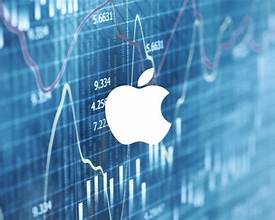As trade tensions between the United States and China intensify, Samsung may find itself in a stronger position than Apple, thanks to its diversified smartphone production strategy. While Apple continues to rely heavily on Chinese manufacturing, Samsung has shifted much of its production to Vietnam, India, South Korea, and Brazil, giving it a potential advantage in the face of rising tariff threats.
Apple’s Heavy Reliance on China Could Prove Costly
Despite efforts to expand into India, 90% of iPhones are still manufactured in China, according to Wedbush Securities. This heavy dependence could pose a serious risk, especially as former President Donald Trump has introduced tariffs on Chinese imports as high as 145%. While smartphones are currently exempt, future tariffs on semiconductors – essential smartphone components – could impact Apple’s costs significantly.
UBS analysts warn that the price of the iPhone 16 Pro Max could rise by $800 if tariffs hit Chinese-assembled models. Even with small-scale production in India and Vietnam (around 5% each), Apple may struggle to adapt quickly enough to avoid price shocks.
Samsung’s Global Manufacturing Network Offers Flexibility
In contrast, Samsung Electronics has not depended on China for years. It closed its last Chinese phone factory in 2019 and now produces most of its smartphones in Vietnam, with additional production in India, South Korea, and Latin America.
According to Counterpoint Research, up to 90% of Samsung’s smartphones are made in Vietnam, with India as the second-largest hub. This widespread manufacturing base could shield Samsung from the worst effects of the US-China trade war, especially if tariffs on Chinese-made electronics expand.
Vertical Integration Gives Samsung a Competitive Advantage
Another key strength lies in Samsung’s vertical integration. The company not only sells smartphones but also manufactures key components like displays, memory chips, and processors. This allows Samsung greater cost control and supply chain stability during uncertain times.
Ben Barringer, a global technology analyst at Quilter Cheviot, highlights this as a major differentiator:
“Samsung is one of the few tech giants that’s vertically integrated, which helps navigate global disruptions more smoothly.”
Will Apple Loyalists Switch to Samsung? Not So Fast
Despite Samsung’s apparent advantages, analysts remain cautious about predicting a sudden surge in its sales. Apple enjoys a fiercely loyal customer base, especially in premium markets like the US. Even if iPhone prices increase, it’s unclear whether that would drive consumers toward Samsung.
Linda Sui of TechInsights believes Apple will ramp up Indian production for US-bound iPhones. In fact, reports indicate iPhone exports from India to the US are already increasing, positioning Apple for better resilience.
Samsung Targets the Mass Market While Apple Stays Premium
Another important distinction is in product strategy. Apple focuses on premium iPhone models with high profit margins, while Samsung offers a broader range, including budget-friendly Galaxy A series smartphones, which are the brand’s top volume drivers.
This gives Samsung an opportunity to appeal to price-sensitive consumers if economic conditions worsen and smartphone prices rise across the board.
Economic Uncertainty Could Impact Demand
While Samsung may avoid the brunt of US-China tariffs, global economic uncertainty poses a risk to all smartphone makers. With tariffs potentially affecting a wide range of goods — from electronics to household essentials — consumers may delay upgrades, especially in mature markets.
“Essentials will take priority over new smartphones,” says Gerrit Schneemann of Counterpoint Research, suggesting that slowing consumer demand could hurt both Apple and Samsung.
Conclusion: Samsung Holds the Advantage — For Now
In today’s evolving global trade landscape, Samsung’s diversified production network, vertical integration, and broad product lineup give it a competitive edge over Apple. However, consumer loyalty, ongoing geopolitical shifts, and economic pressure will all play critical roles in shaping the future of the smartphone market.






